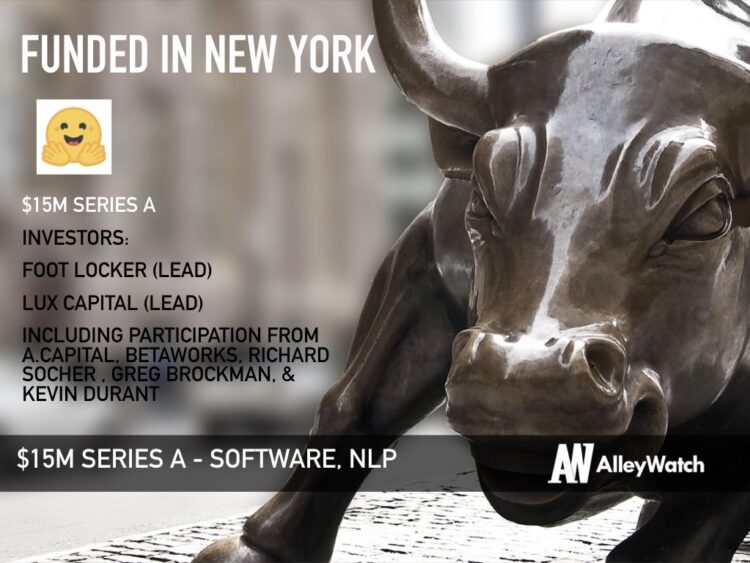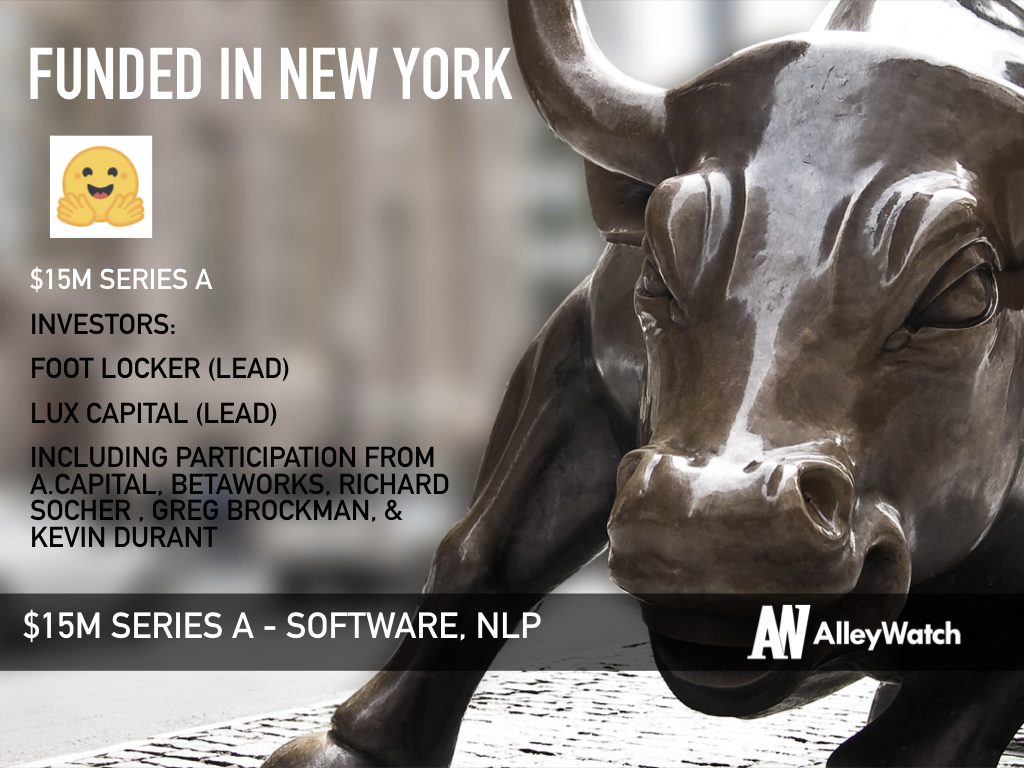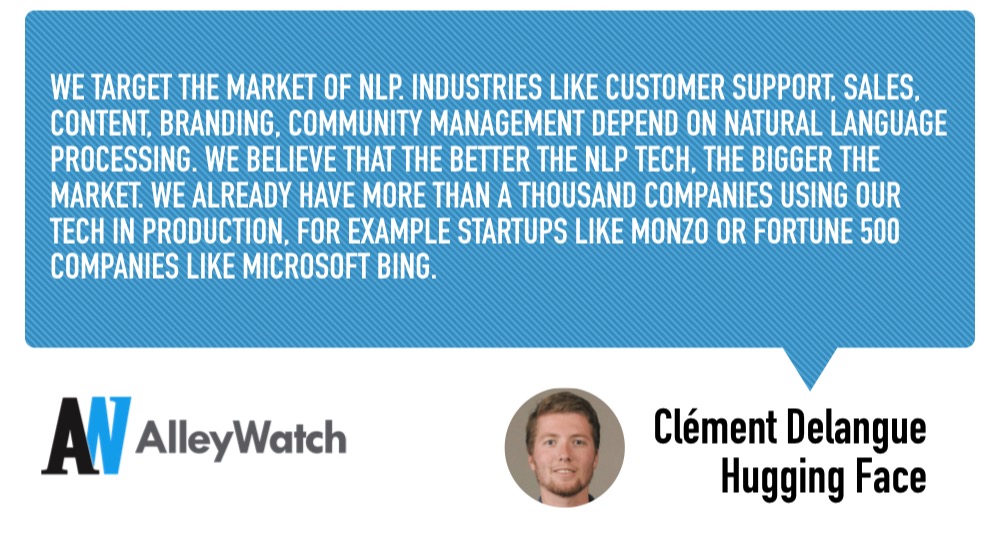Natural language processing (NLP) is at the core of breakthrough, AI technologies and has powered apps like SignAll, which is used to translated sign language into text. Hugging Face brings NLP to the mainstream through its open-source framework Transformers that has over 1M installations. Hugging Face’s NLP platform has led to the launch of several that address =customer support, sales, content, and branding, and is being used by over a thousand companies.
AlleyWatch sat down with Cofounder and CEO Clément Delangue to learn how Hugging Face has evolved from a conversational AI chatbot to an open-source, NLP platform, the company’s future plans, and recent funding round, which brings its total funding amount to $20.2M across three rounds.
Who were your investors and how much did you raise?
We raised $15M in a Series A funding led by Lux Capital, with participation from A.Capital, Betaworks, Richard Socher (chief scientist at Salesforce), Greg Brockman (cofounder & CTO OpenAI), Kevin Durant and other angels.
 Tell us about the product or service that Hugging Face offers.
Tell us about the product or service that Hugging Face offers.
A year ago, we created Transformers, which became the most popular open-source platform for developers and scientists to build state-of-the-art natural language processing technologies including text classification, information extraction, summarization, text generation, and conversational artificial intelligence.
What inspired the start of Hugging Face?
We believe NLP is going to be the most impactful artificial intelligence technology. People use language in almost every part of life and work, so machines that understand and generate natural language are extraordinarily important.
How is Hugging Face different?
Our main difference is probably that we take an open-source and open science by default approach to natural language processing. Everything we do is shared and everyone can contribute to our efforts. It led to broad adoption both by NLP researchers and practitioners.
What market does Hugging Face target and how big is it?
We target the market of NLP. Industries like customer support, sales, content, branding, community management depend on natural language processing. We believe that the better the NLP tech, the bigger the market. We already have more than a thousand companies using our tech in production, for example, startups like Monzo or fortune 500 companies like Microsoft Bing.
What’s your business model?
We are not generating any revenue at the moment and are lucky to have investors who provide the funds to invest in the long-term rather than short-term monetization.
What was the funding process like?
Given our open-source traction, it was a pretty competitive process. Despite interest from many more established Silicon Valley VCs, we decided to go with Lux, partly because of their NYC presence.
What are the biggest challenges that you faced while raising capital?
We are working on a very technical subject that involves state-of-the-art science in an open-source setting. Finding the investors who have an understanding of both these subjects was very tricky.
What factors about your business led your investors to write the check?
As Brandon Reeves from Lux puts it: “the ethos of the AI community has always been similar to the open-source community, but we have yet to see a startup at this intersection really stand out until we talked to the Hugging Face team. They’ve won the open-source community with over 1M installs, ~19K Github stars, and many use cases in production.”
What are the milestones you plan to achieve in the next six months?
Our main goal is to deepen the adoption of our open-source technology and help the field of NLP move forward.
What advice can you offer companies in New York that do not have a fresh injection of capital in the bank?
I would recommend focusing on adoption. Even for deep tech, this is the best proxy for the quality of the technology that you are building.
How has the business changed since we last spoke in 2018?
It’s not just about conversational AI anymore. That was our first focus, but we quickly realized companies wanted to use NLP for many different use-cases. So now we’re building a very generalist NLP technology.
It’s not just about conversational AI anymore. That was our first focus, but we quickly realized companies wanted to use NLP for many different use-cases. So now we’re building a very generalist NLP technology.
Where do you see the company going now over the near term?
NLP has seen fantastic progress over the past few months with a string of models that repeatedly improved the state-of-the-art, like BERT, GPT-2, XLNet, and our own DistillBERT. We believe this is just the beginning of the revolution in NLP that we want to keep leading to make it the most impactful field of artificial intelligence.
Where is your favorite winter destination in the city?
Our office is in Dumbo and I love walking around Jane’s Carousel even during the winter.





